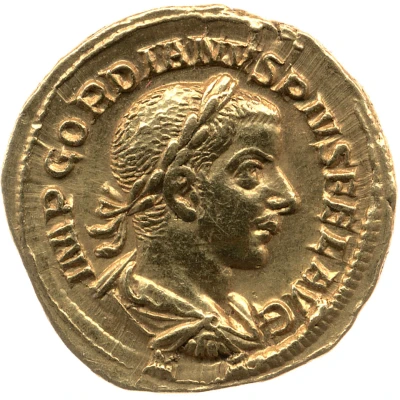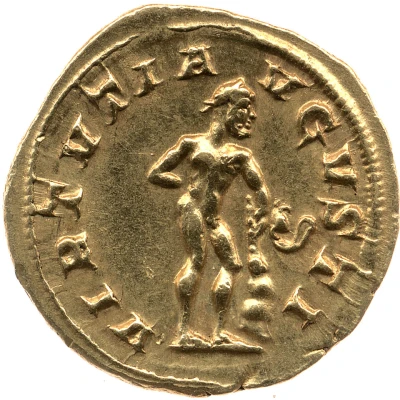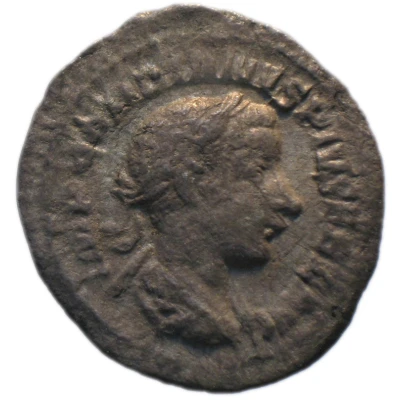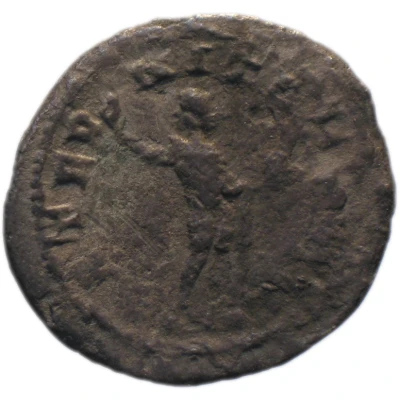


© Trustees of the British Museum
Aureus - Gordian III VIRTVTI AVGVSTI; Hercules
| Gold | 5 g | 20 mm |
| Issuer | Rome › Roman Empire (27 BC - 395 AD) |
|---|---|
| Emperor | Gordian III (Marcus Antonius Gordianus) (238-244) |
| Type | Standard circulation coin |
| Years | 241-243 |
| Value | Aureus (25⁄2) |
| Currency | Antoninianus, Reform of Caracalla (AD 215 – 301) |
| Composition | Gold |
| Weight | 5 g |
| Diameter | 20 mm |
| Shape | Round (irregular) |
| Technique | Hammered |
| Orientation | Variable alignment ↺ |
| Demonetized | Yes |
| Updated | 2024-10-05 |
| Numista | N#280838 |
|---|---|
| Rarity index | 100% |
Reverse
Hercules, nude, standing right, resting right hand on hip and resting left hand on club set on rock; beside club, lion-skin.
Script: Latin
Lettering: VIRTVTI AVGVSTI
Unabridged legend: Virtuti Augusti
Translation: To the courage of the emperor (Augustus)
Comment
Biaggi 1373–1374; Mazzini 401.
Mass varies: 4.93–5.14 g;
Example of this type:
Trustees of the British Museum
Source:
Online Coins of the Roman Empire (OCRE)
Interesting fact
The Aureus coin featuring Gordian III and Hercules was minted during a time of great turmoil in the Roman Empire. Gordian III was the last emperor of the Severan dynasty and ruled from 238 to 244 AD. During his reign, the empire faced numerous challenges, including invasions by the Sassanid Persians and the Germans, as well as internal political instability. Despite these challenges, the coinage of Gordian III's reign is known for its high quality and artistic merit, with the Aureus coin being a prime example. It features a portrait of the emperor on one side and a depiction of Hercules on the other, symbolizing the emperor's strength and leadership.



